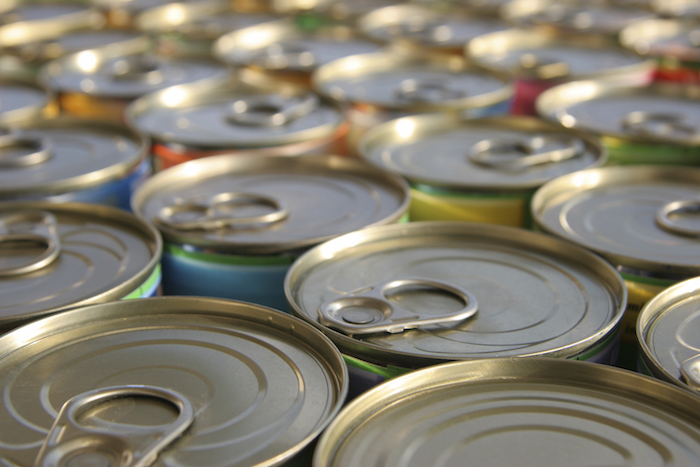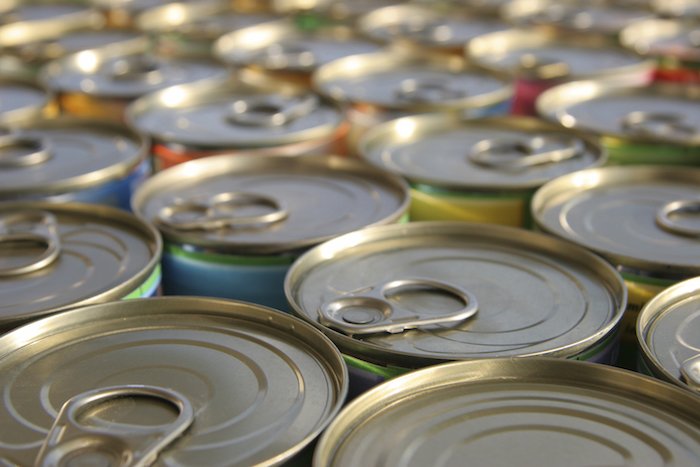Some food comes in cans.
Cans are called tins too.
Canned food can also be in glass jars.
Food is heated in the tins and jars so it does not go bad.
People have been doing this for hundreds of years.
Preserving food (keeping food safe)
©Getty Images
Canning is a method of preserving food by first sealing it in air- tight jars, cans or pouches, and then heating it to a temperature that destroys bacteria that can damage food or cause illness if eaten.
In the early 1890s, it was difficult to supply fresh food to the huge armies fighting in wars. The French Emperor, Napoleon Bonaparte, encouraged a newspaper to offer a cash prize to any inventor who could come up with a cheap and effective method of preserving large amounts of food.
Food preserved in glass jars ©Getty Images
In 1809, the prize was won by a cook called Nicolas François Appert who observed that food cooked inside a jar did not spoil unless the seals leak. He developed a way of sealing food inside glass jars, and set up a canning plant with his prize money. Appert used glass containers not cans.
However, glass containers presented many obvious challenges for transportation.
Englishman Peter Durand developed a way in which cylindrical tin canisters (later known as 'tins' or 'cans') could replace glass jars. These tins were cheaper and quicker to make and were much tougher than glass jars. Soldiers cut open the cans with knives or smashed them on rocks. It was 30 years before tin-openers were invented!
A modern canning factory. ©iStock Images
The process was taken further by Bryan Dorkin and John Hall when they set up the first commercial canning factory in England in 1813. The demand for canned food grew, for armies in action far from home. The canning process was gradually put into practice in other European countries.
An Englishman who moved to the United States, Thomas Kensett, established the first American canning factory in New York.
Canning Today
Most factories are located in the area where the crops are grown so that food is canned at its freshest. The basic principles remain the same, but now food sealed in airtight cans is heated with steam pressure at temperatures of 116º to 121º C, depending on the food in the cans. This ensures the heat is applied for the smallest amount of time needed to preserve it, while keeping the most nutrition.
Cans can be recycled. ©iStock Images
Today's cans are made of recyclable steel.
Some cans need to be opened using a special can opener. Image©Getty
Some cans are opened with a special can opener, but today more and more cans come with a built in ring pull to open them.
Today more and more cans are made with ring-pull openers so that can openers are rarely used. Image©Getty
It’s a good idea to get information from more than one source!
Read facts about canned food
https://www.canstruction.org/canfoodfacts
Read about ways food was preserved before canning was invented (scroll down to below the videos)
https://easyscienceforkids.com/preserving-food/
Watch tomatoes being picked and taken to a factory and canned:
https://www.youtube.com/watch?v=jr5Nq7W1KT4








